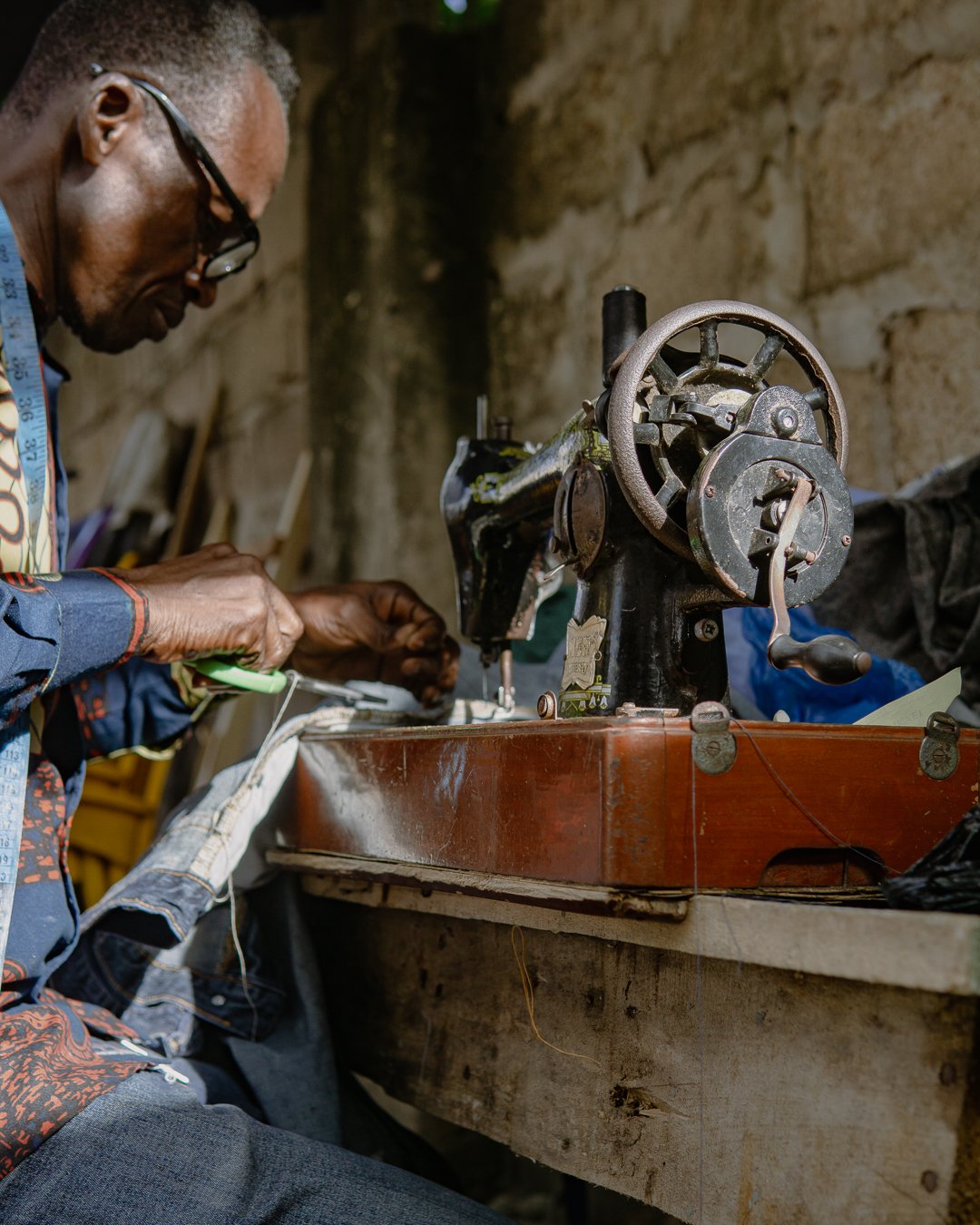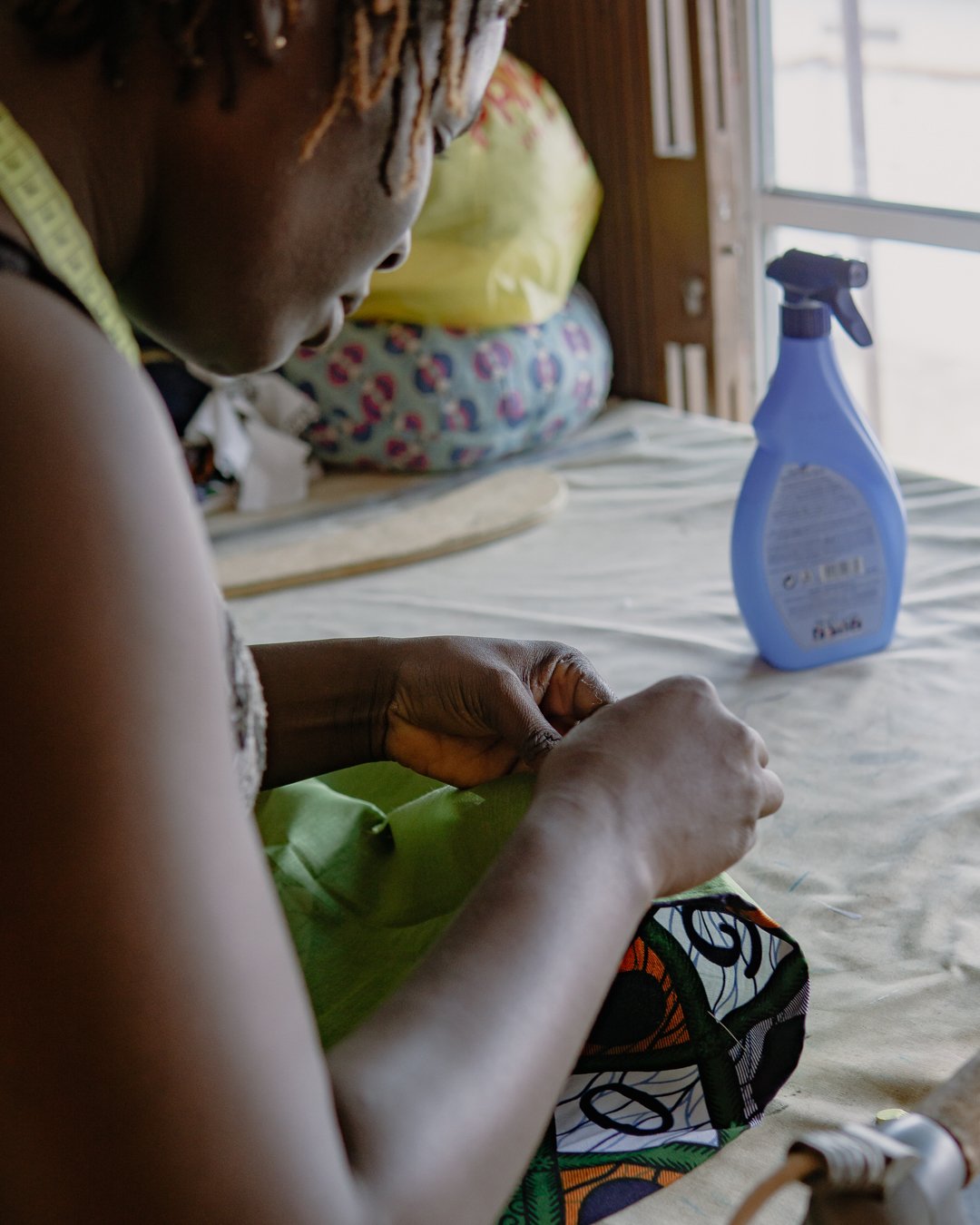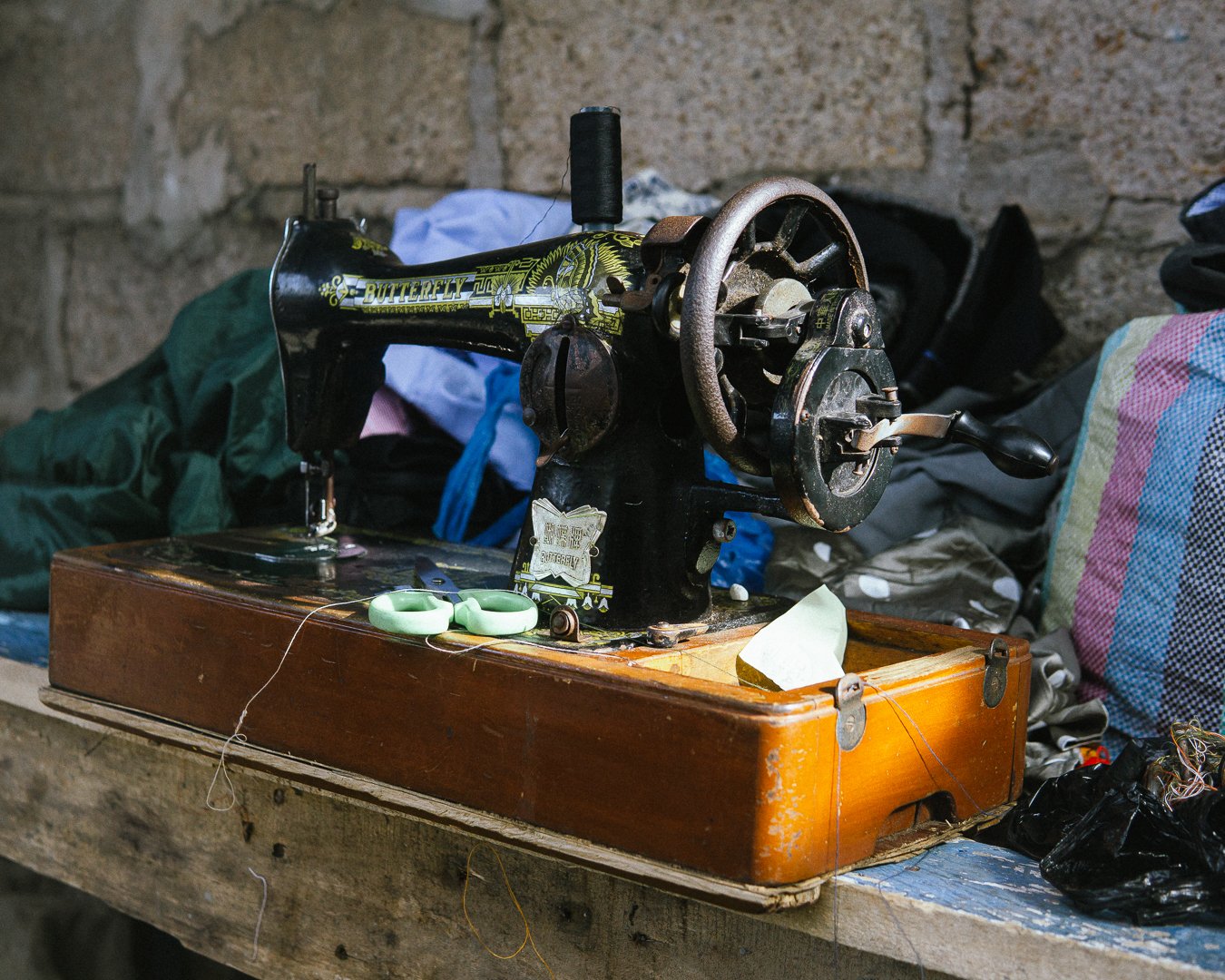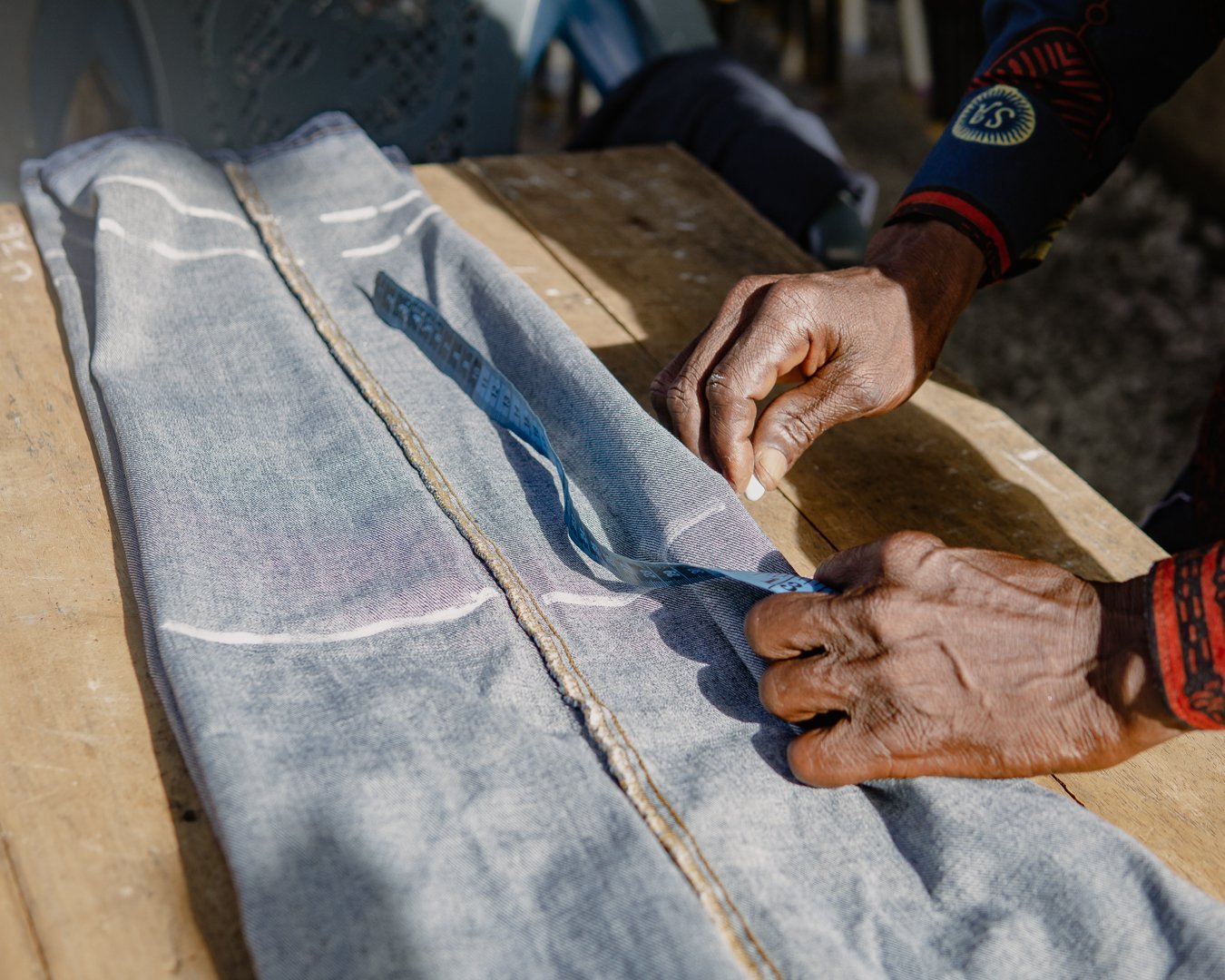Oye Adie Yie - They Do Things Well
You know how the PowerPuff girls would swoop in to save the world from "bad" things and monsters? For most Ghanaians, the Oye Adie Yie (translates from Twi to They Do Things Well) possesses a similar charm. They stroll through your neighbourhood armed with sewing machines, ready to fix that dress you had your heart set on for the party, and voila, they save the day.
From my earliest memories to my high school days, the sound of bell-like clasps, sometimes accompanied by the melodious cry "Oye Adie Yie," felt almost like a divine call, especially on days when my clothes needed mending or altering.
“The Oye Adie Yie is deeply intertwined with Ghanaian fashion culture—or perhaps Ghanaian fashion culture is deeply woven into the fabric of the Oye Adie Yie.”
Either statement holds true, given the extent to which Ghanaians prioritize maximizing an item's utility before considering its disposal.
Here, dress alteration goes beyond basic tailoring and includes intricate hand-sewn embellishments, fabric manipulations, and creative repurposing of materials. Most prominent among the repurposing methods is the Asasawa- which is a patchwork of a variety of African fabric pieces to create a vibrant work of art. It is common to find local artisans and seamstresses who specialize in transforming ready-made garments into one-of-a-kind pieces through skilled alterations.
Dress alteration culture has been very popular in Ghana, reflecting a strong tradition of creativity and craftsmanship in its fashion landscape. Ghanaians have a time-honoured practice of altering and customizing clothing to fit their personal style and preferences. This culture of dress alteration is deeply rooted in the country's vibrant fashion scene and is celebrated as a way to express individuality and uniqueness. You’re either on the lookout for the Adie Yie in the day, or serendipity finds you when you hear the famous ring. So you dash off to catch the saviour of the day, lest they make it into your neighbour’s first.
This popularity of dress alteration can be attributed to various factors, including affordability and exclusivity but it has a positive side effect which is sustainability. Ghanaians often opt to alter their clothing instead of purchasing new items, allowing them to save money while giving their wardrobe a fresh look. Additionally, dress alteration preceded and aligns with the growing global movement towards sustainable fashion, as it promotes the reuse and repurposing of garments, reducing waste in the process. The pieces synonymous with Ghanaians, from the Kente to the fugu to the Ntoma (printed fabric) to lace pieces are truly valued by Ghanaians. The idea that drives our relationship with clothing is value and longevity. Parents and older folk will take pride in passing their beloved on to younger peeps. In the same way, the idea was for clothes to go around in the community as many times as possible. So if you outgrew a piece of clothing, it would be passed on to your cousin, or a neighbour. People resorted to altering clothes whenever the need arose: altering a slit length to fit a shorter person, altering the waist of a pair of pants/skirt to suit its new wearer, or simply fixing wears and tears to make a piece appear spiffy and just increase its longevity.
This to the Ghanaian, is the meaning of luxury.
“The popularity of dress alteration in Ghana has also been fuelled by the vibrant second-hand clothing market. Ghanaians have a long-standing tradition of purchasing second-hand clothes, known as "obroni wawu" or "broni wawu," (dead white man’s clothes) which are imported from Western countries. These pre-loved garments are often altered and customized to suit local preferences and styles, creating unique fashion statements.”
Come by with your creative direction, and trust the Oye Adie Yie at the Kantamanto Market to bring the va-va-voom to your thrift pieces. In the late 2000’s the most popular song in Ghana was the “Oye Adie Yie” song by Dunsin. An indicator how grounded the Oye Adie Yie was in the pop-culture scene of Ghana at the time.
The love for thriftting and responsible fashion consumption is gaining momentum and so is the Oye Adie Yie’s significance after what may seem like an intermission; a period where the Oye Adie Yie experienced a steady decline in their relevance. The Oye Adie Yie has shifted their mode from strolling to strategic positioning. What’s to account for this period of immersion? The proliferation of fast fashion pieces; or pieces that just lack repairability. Fast fashion brands often prioritize cost-cutting measures, such as using low-quality materials and poor construction techniques, which make it difficult to repair garments. Additionally, the fast-paced nature of the industry promotes a disposable mindset among consumers, leading to a lack of interest in repairing clothes and instead opting for buying new ones.








